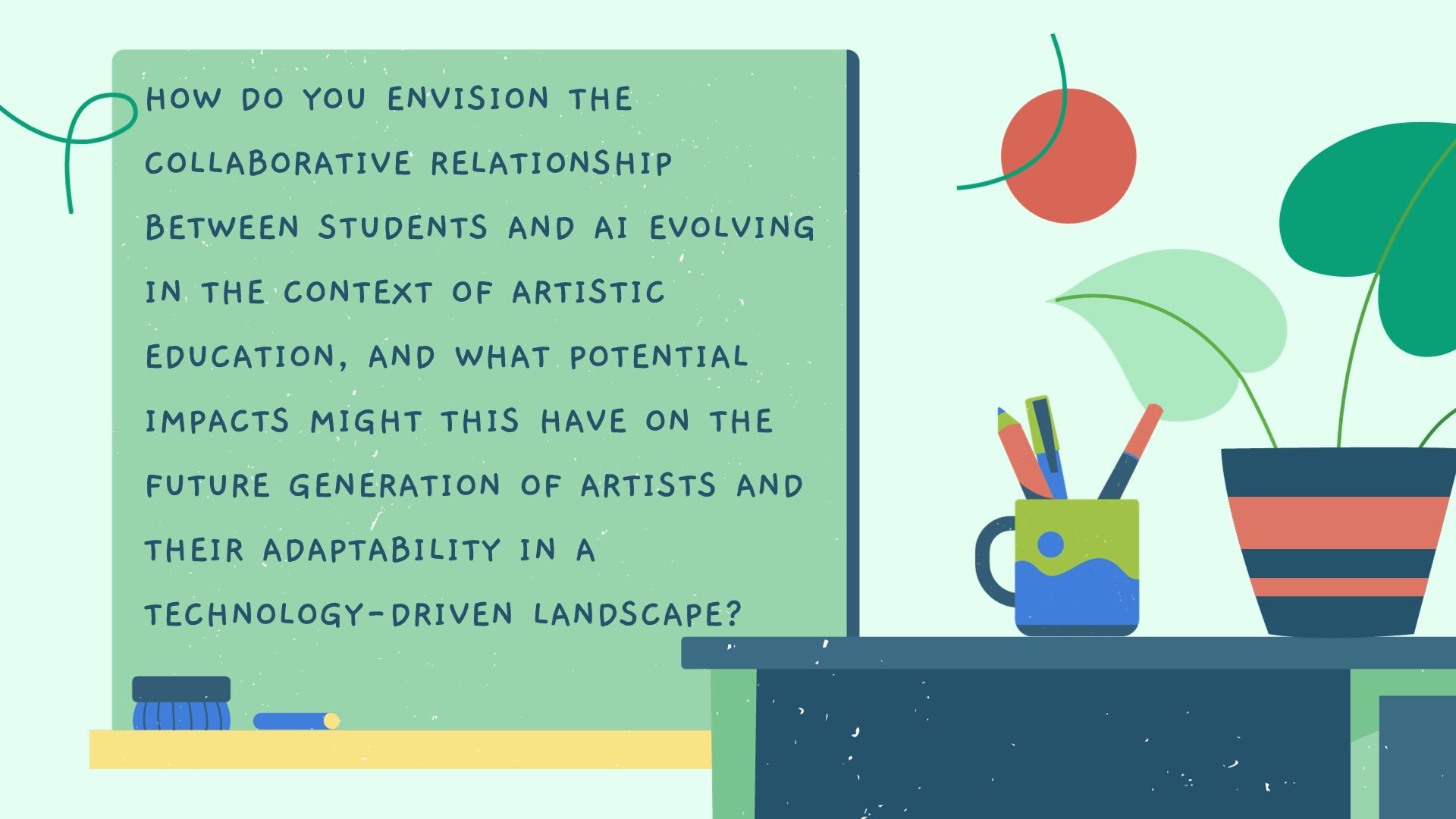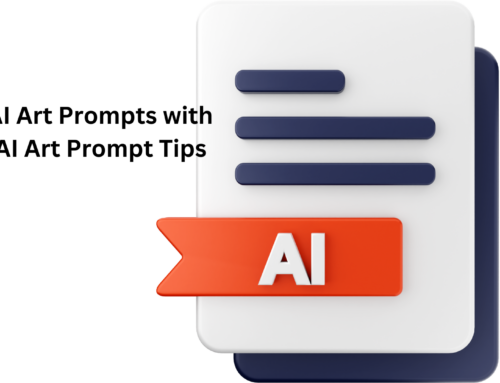In the ever-evolving landscape of education, the infusion of AI, especially in the form of AI art generators in the classroom, is reshaping the way we approach creative learning. Imagine this: AI systems not only assisting in creating art but also becoming a catalyst for understanding the subtleties of the creative process. It’s beyond just replicating styles; these AI art generators, often referred to as the next-gen artists, are transcending conventional boundaries, challenging the very essence of creativity in education.
Now, as we step into 2023, the role of AI art generators like DALL-E 2 and midjourney becomes increasingly significant. These generators, driven by advanced algorithms and artificial intelligence, go beyond the conventional image creation process. They respond to prompts, creating unique artwork based on a text prompt, transforming the way students engage with their creative projects. This innovative use of AI not only helps students generate images but also acts as a prompt for their imagination, opening up new possibilities in the realm of creative learning.

Generative AI in Education
In the realm of creative learning, the power of artificial intelligence (AI) to generate images is creating a beautiful revolution. With the advent of new AI technologies like DALL-E 2, artists and educators alike can harness the capabilities of AI to seamlessly merge text and images, giving rise to a new era of visual content creation. This innovative fusion allows for the creation of realistic images through digital tools, enabling educators and students to visualize concepts and ideas in ways previously unimaginable. In the realm of augmented reality, AI becomes a catalyst for enhanced learning experiences, as students are now able to generate artwork that transforms words into images within seconds. This not only enhances students’ engagement but also has the potential to better the results of educational and marketing campaigns. As we delve into the possibilities that AI, like DALL-E, offers, we find ourselves at the forefront of a movement to create unique and impactful learning environments. In conclusion, the integration of AI in creative learning is not just a tool; it’s a key to unlocking the full potential of imagination and expression.
According to Mr. Diego Cardini, Founder / Director of The Drum Ninja, “In my experience as an educator, AI art generators are a game-changer in creative education. These tools are expanding the realms of artistic possibility in the classroom, enabling students to push the boundaries of conventional creativity. They make advanced artistic techniques accessible to all skill levels, fostering an inclusive environment. This technological integration in art education not only broadens creative skills but also nurtures a partnership between students and AI. The future of artistic education, influenced by these innovations, is heading towards a harmonious blend of digital and traditional art, cultivating a new generation of artists who are versatile in both realms.”
One significant advantage of incorporating AI art generators in education is the accessibility they offer. Students, regardless of their artistic background, can engage with these tools to create visually stunning pieces. As Michael Chen, a startup enthusiast and Head of Growth of Notta, notes, “I see AI art generators in education as pivotal. They’re revolutionizing creative learning, and merging technology with art. This prepares students for the digital era, equipping them with a blend of artistic and technical skills vital for future industries. These tools democratize creativity, ensuring all students can participate, and fostering a workforce ready for technological challenges and innovations. This evolution is key for developing adaptable, creative professionals essential in our tech-centric business landscape”
The Impact of AI Generated Art in Education and the Art World
As we venture further into this transformative journey of AI in creative learning, the influence of AI art generators becomes even more pronounced, especially within the realm of art schools and university programs. The stable diffusion of AI generated art within these educational settings is akin to welcoming a new artistic collaborator. Students are not merely using AI art generators; they are actively incorporating them into their creative processes, navigating the dynamic fusion of human creativity and AI technology.
In this setting, the use of AI in art projects goes beyond conventional boundaries, pushing the envelope of creativity. The art world, once bound by traditional norms, is now embracing the possibilities of AI-generated art. It’s not just about replicating existing styles; students are delving into diverse genres, from pop art to innovative conceptual art, fueled by the capabilities of AI image generators. As this influence extends into the broader education community, it sparks conversations about the evolving role of technology in shaping the next generation of artists.

Use AI art generators in the classroom to revolutionize learning
As we explore the transformative impact of AI-based creativity, the concept of the “nightcafe” takes on new dimensions. Through the lens of AI art generators, like those developed by OpenAI, art students are not just creating art; they are coalescing with technology to redefine the future of art. This immersive experience goes beyond the limitations of traditional tools, offering a variety of AI-based resources, including text-to-image capabilities, that cater to the diverse palette of art creation.
In the digital age, where technology and creativity intertwine seamlessly, AI tools become indispensable for art educators at the School of the Arts. These tools, driven by generative AI, facilitate a dynamic art generation process, fostering an environment where human creativity harmonizes with the potential of artificial intelligence. It’s not merely about replicating styles; it’s about exploring new frontiers in concept art, unveiling possibilities that extend beyond conventional artistic boundaries. In this collaborative dance of human creativity and generative AI, the future of art takes shape, and the nightcafe of artistic expression becomes a vibrant canvas where art students, guided by AI tools, paint the future strokes of creativity.
Final Thoughts on ChatGPT and Artistic Prompts
In the realm of creative learning, the collaboration between students and AI art generators, such as ChatGPT, has ushered in a new era of artistic exploration. The ability to use AI art generators in the classroom not only empowers students to create and use AI art but also sparks a dynamic interplay between human creativity and machine learning. It’s a canvas where the boundaries are not barriers but invitations to break new ground. As students use these tools, the fear of plagiarism dissipates, making way for an environment where originality is nurtured rather than feared.
In today’s world of education, the AI art project becomes a testament to the synergy between technology and creativity. The process of using an AI to generate an image, add text, and also use AI art in collaboration showcases the potential for a harmonious blend of human ingenuity and machine assistance. As we wrap up this exploration into reshaping creative learning, it’s evident that the integration of AI art generators isn’t just about creating beautiful artworks; it’s about fostering a culture where students leverage machine learning tools to enhance their artistic journey, turning boundaries into bridges toward uncharted creative horizons.

Airbrush AI: Crafting Visual Content and Artwork
Airbrush AI is a cutting-edge text-to-image generator tool that’s making waves in the creative landscape. In this new age of generative technology, Airbrush AI stands out as a powerful platform, pushing the boundaries of what’s possible in digital art. Now, let’s dive into five key features that make Airbrush AI a game-changer:
- Generative Capabilities: Airbrush AI operates with advanced generative capabilities, mimicking the creativity of human artists in crafting unique and diverse visuals.
- Artmaking Revolution: It revolutionizes the process of artmaking by providing users with a dynamic tool to bring their creative ideas to life in the digital realm.
- Versatility Across Training Sets: Thanks to its use of generative adversarial networks, Airbrush AI can seamlessly adapt and generate images across a wide range of diverse training sets.
- Affordance for Creative Expression: Airbrush AI offers an affordance for creative expression, empowering artists to explore and convey their lived experiences through captivating computer graphics.
- Innovative Push for Human Thinking: Beyond just generating images, Airbrush AI challenges and expands human thinking about what’s achievable in the realm of digital art, fostering innovation and imagination.






Leave A Comment